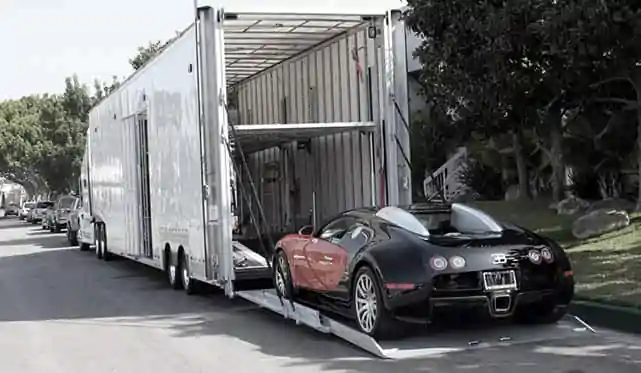10 Essential Items You Need in Your Vehicle First Aid Kit

Having a first aid kit in your car or vehicle can save lives. You can use it to treat injuries while you wait for expert medical attention, in order to alleviate the injured person’s pain and to prevent further damage (e.g. bleeding or infection).
Although we don’t like to think about accidents when we’re on the road, it is good to be prepared in the event that you, or someone else involved, needs first aid. In your vehicle first aid kit, you should have:
- Tuff Scissors
- Sterile Wipes
- Powdered Gloves
- Foil Blanket
- Burn Dressings
- Plasters, Bandages & Dressings
- Pins & Tape
- Eye Wash
- First Aid Booklet
- Resuscitation Face Shield
1. Tuff Scissors
Tuff Scissors, also known as tuff cuts or trauma scissors, are used to cut through clothes — or seat belts — to access an injured person, body part or wound. These are an essential for when you’re in a vehicle.
2. Sterile Wipes
You can use wipes to sterilise an injured person’s wound and the area surrounding it to reduce the risk of infection. You should also use these wipes to sterilise your own hands before you treat someone.
3. Powdered Gloves
For similar reasons to the sterile wipes, powdered gloves help reduce the risk of contamination between first aider and subject. Before you treat an injured subject, make sure you put the gloves on.
As well as reduced risk of infection, gloves can also reduce sweat and improve your grip — this can help to complete certain first aid procedures, like putting on bandages.
4. Foil Blanket
In the event of an accident, a foil blanket can be used to prevent shock in the victim, or to keep the subject warm in cold conditions and cold in hot conditions. It will also protect the subject against wind and rain.
5. Burn Dressings
Burn dressings are versatile foam dressings which provide immediate and essential treatment and protection following a 1st, 2nd or 3rd degree burn. It works to moisturise the burn area, and uses tea-tree oils to soothe and cool the skin, minimising trauma and tissue damage.
6. Plasters, Bandages & Dressings
Having a mixture of plasters, bandages and dressings in your vehicle first aid kit will help you protect different types of injuries.
- Plasters are an adhesive strip of sterile material for covering light cuts and wounds, in order to prevent further damage or infection.
- Wound dressings are used to cover and protect a deeper wound from the external environment.
- Bandages are used to hold dressings against wounds or to support or immobilise injured joints, tissue injuries and broken bones.
7. Pins & Tape
Pins and Medical Tape are another essential for your vehicle first aid kit.
There are four main types of medical tape — micropore, retention, strapping and sports — but the most important one for your vehicle is micropore. It’s a non-stretch medical tape, which can be used to secure plasters and dressings with ease. Likewise, safety pins can be used to fasten bandages.
8. Eyewash
Eyewash purges the eye of any foreign bodies and cleans the surface with purified water to prevent infection. Simple first aid hazards, such as dust or particles getting stuck in your eye, can escalate to more serious problems fast, but eyewash works faster to prevent this.
9. First Aid Booklet
A First Aid Leaflet, Booklet or Manual will offer first aid advice, and remind you how to complete basic first aid procedures, when you’re on the road. Think essential step by step advice of what action to take in an emergency situation, including CPR, severe bleeding, broken bones, burns and eye injuries.
10. Resuscitation Face Shield
Designed for resuscitation and mouth to mouth ventilation of a non-breathing adult, a resuscitation face shield is essential for if the worst happens. The one-way valve allows expired air ventilation for a safer and more effective method of resuscitation, and the film acts as a barrier to help prevent infection during resuscitation.
Most premade Vehicle First Aid Kits will have all of this in (and more), to ensure you’re prepared in the event of a road accident.
Other Vehicle First Aid Items
There are other useful items you can keep in your first aid for when there isn’t an accident, but you need other treatment.
- Painkillers – ibuprofen and paracetamol for pain.
- Travel Sickness Remedies – to prevent nausea, and other travel related illness.
- Insect Bite relief – to relieve bites and stings.
- Antihistamines – if you suffer from allergies or hayfever.
- Tweezers – say goodbye to splinters.
- Hand Sanitiser – to keep your hands clean.
- Instant Cold Pack – used to ease pain (by numbing the area) and reduce swelling and inflammation (for bruising, sprains and muscle injuries).
Finally, if you live somewhere with snow, or otherwise bad and unpredictable weather, keeping a motorist snow shovel or portable snow spreader to hand is never a bad idea.
And that’s it, your vehicle first aid kit is ready to go — just remember to put it in your car! The glove compartment or boot is a popular spot to keep your kit.
Written by Holly, for morSafe Supplies.





